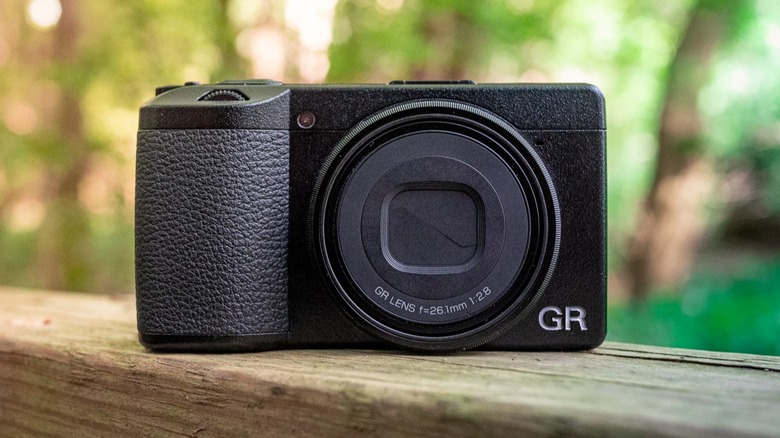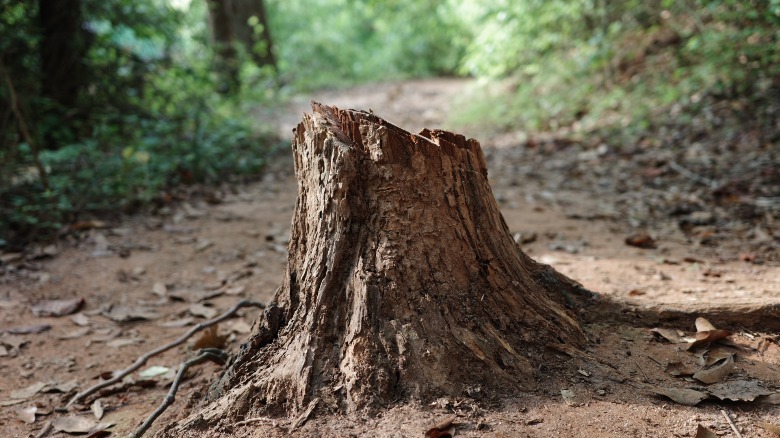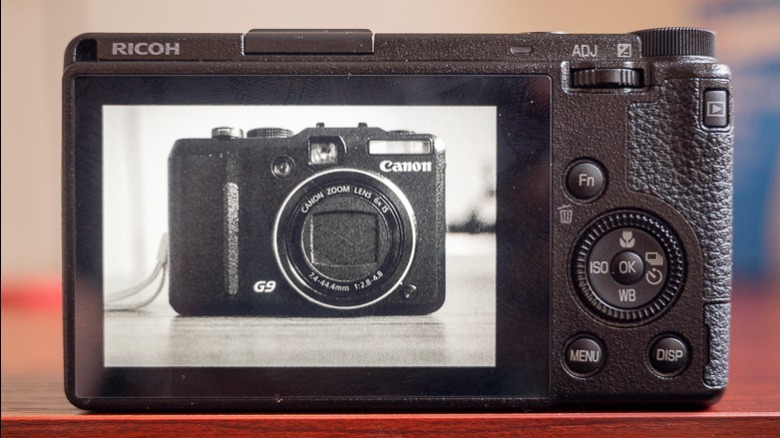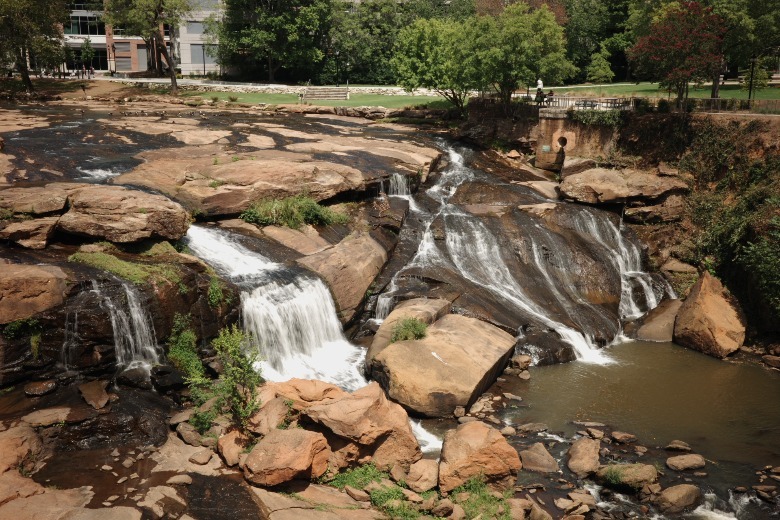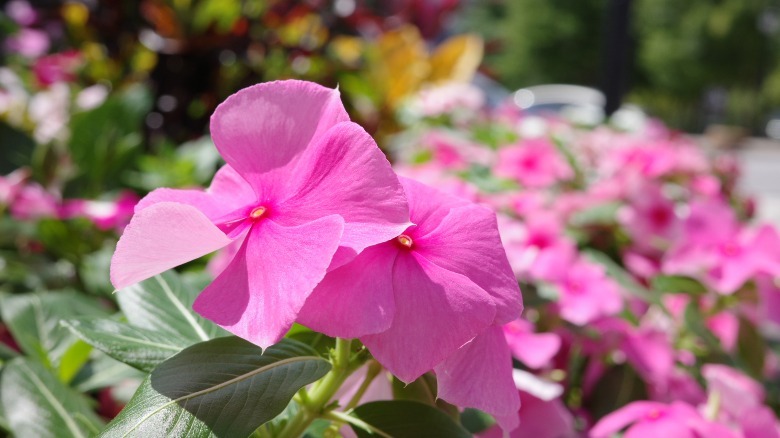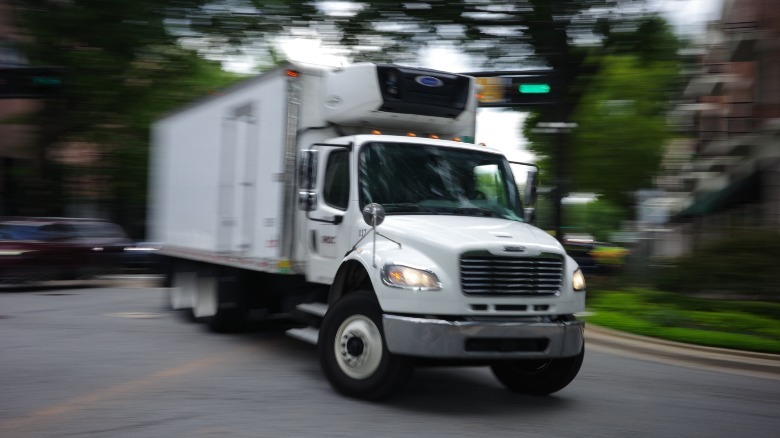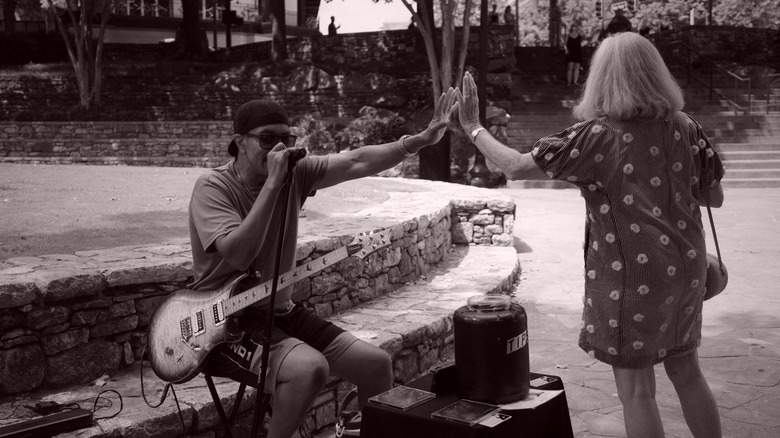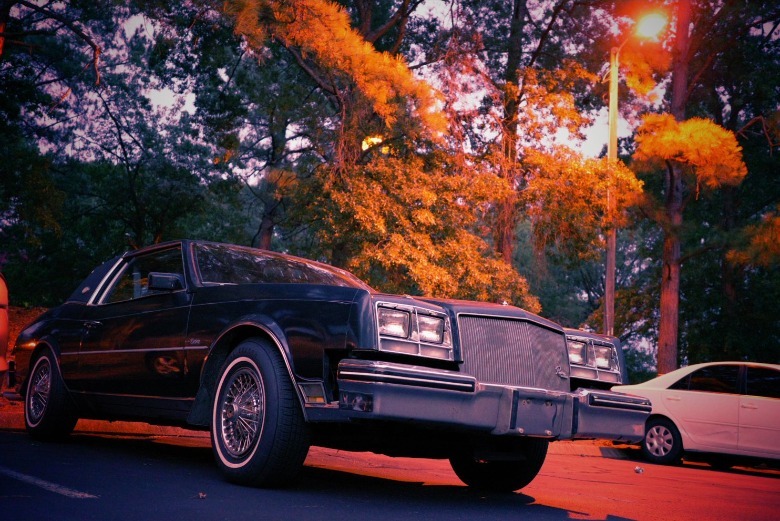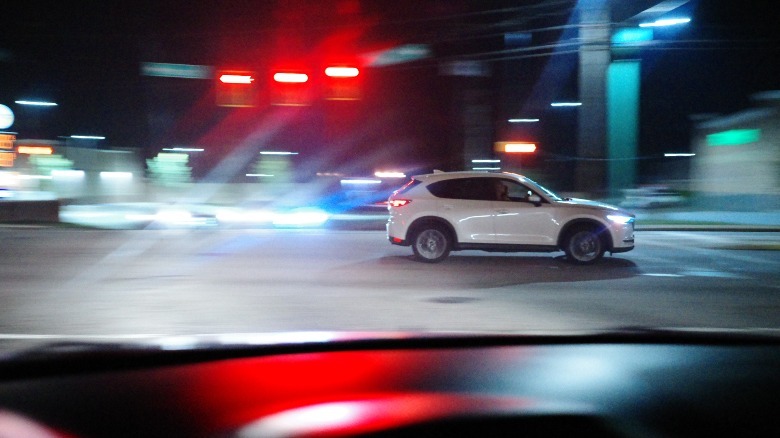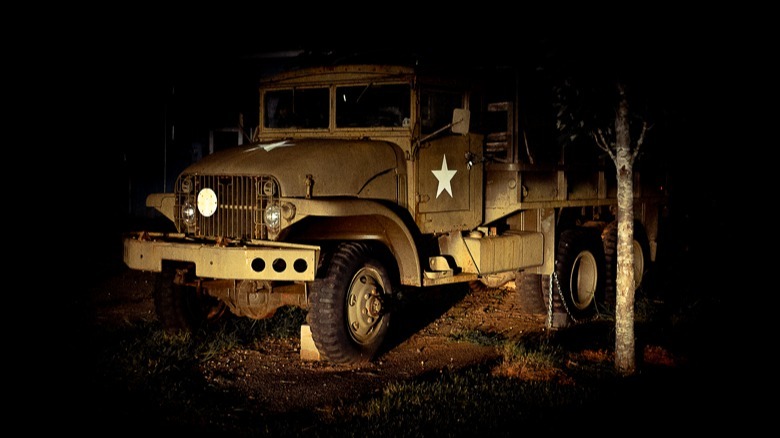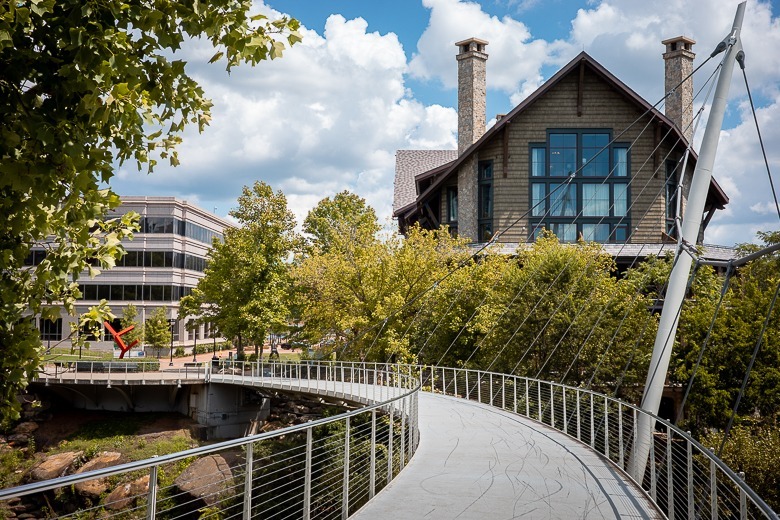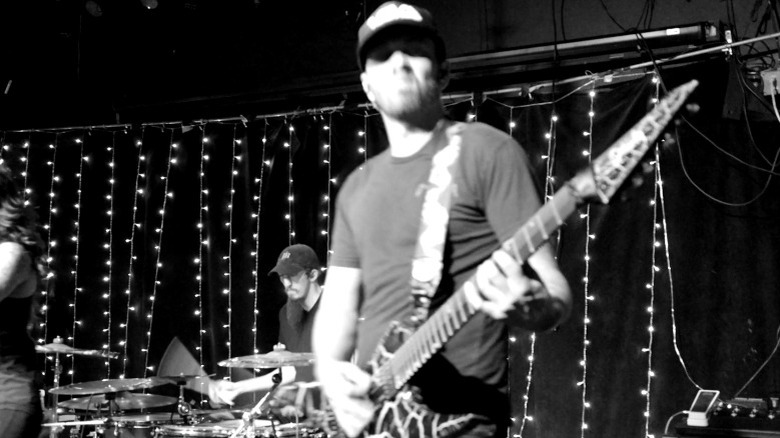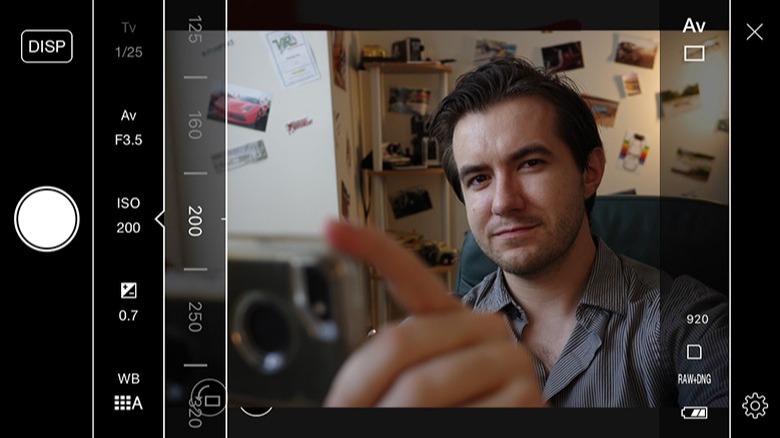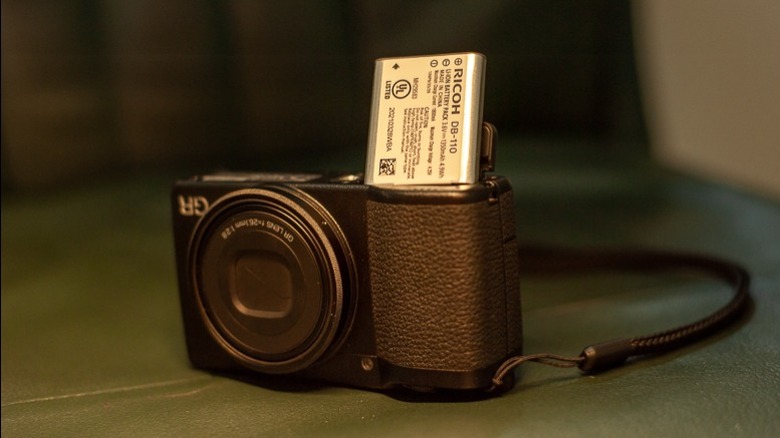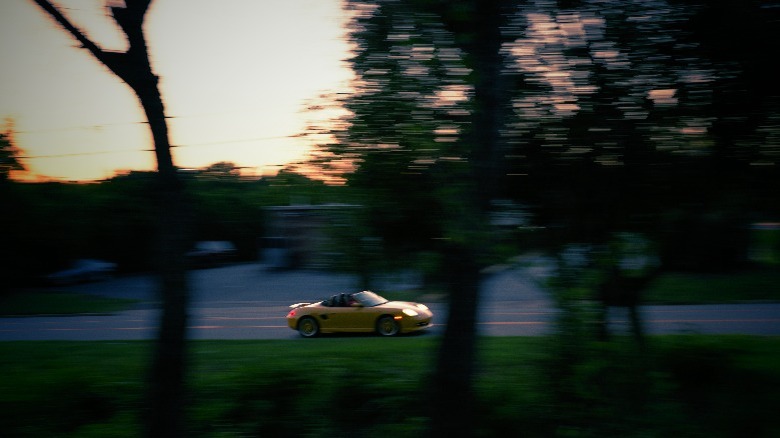Ricoh GR IIIx Review: Pro Photographic Power In Your Pocket
- Excellent ergonomics & compact body
- Stellar low light performance
- Built-in creative processing
- No zoom Lens
- Clumsy autofocus
- Subpar video
As someone who owns many — too many — cameras of varying eras and feature sets, the type of camera that's captivated me most this year are old digital compact point n' shoots. Having a little cheap camera on you while traveling is so much more relaxing than trying to pack a hefty DSLR safely, and you can still get some pretty fantastic shots. However, smaller cameras come with drawbacks. Their lenses typically aren't the best quality, and their small image sensors make low light shooting a no-go. These are the issues that the Ricoh GR series hopes to subvert entirely, cramming professional image quality into a palm-sized body.
The main attractions with the GR IIIx are a 24 megapixel APS-C image sensor and a fixed 26.1 millimeter lens that opens up to an f/2.8 aperture. The sensor measures 23.5 by 15.6mm: not as large as a 35mm full frame, but still nearly four times the size of the one-inch sensors found on most other compacts. When combined with the sensor crop, the lens gives about a 40mm field of view. That's about the only difference between this camera and the original GR III from a few years ago, which has a 28mm view.
The built-in sensor stabilization opens up even more options for night or indoor shooting, by helping to eliminate camera shake at low shutter speeds. The camera also packs in two gigabytes of internal storage. Not much, but it might save your hide if you forget to bring a memory card.
Camera Design
The overall shape of the GR IIIx is totally unchanged compared to the GR III. In fact, it's mostly remained the same since the release of the first film GR way back in 1996. Exterior dimensions measure out at 109 x 62 x 33 mm: about the size of a smartphone, with some extra thickness on top. Carrying the Ricoh in a backpack, handbag, satchel, or jacket pocket is no issue at all, but jeans pockets are a tight squeeze. To maintain that small size, it had to lose some features along the way, including the built-in flash and viewfinder. Shot framing is done with a fairly large LCD touchscreen on the back.
For on-the-fly setting adjustment, it has plenty of tactile controls, including a front aperture dial, a rocker switch for exposure control, and a D-pad clickwheel combo for things like ISO and manual focus adjustments. One button is there for custom mapping, and I would've liked more. You can customize what the D-pad buttons do, but that means losing access to handy functions like white balance control. Lastly, there's a radial control dial up top with two custom setting slots.
Ergonomically, the GR feels great in the hand, and you can grip it with the same confidence as a full-size camera. The tight placement of the controls also means you can hold it just with your right hand and still have access to basically every feature. Push the power button, and the camera springs to life instantaneously.
First Impressions
The first thing I noticed about the GR was its quick startup time, which means basically no waiting between deciding to take a photo, then lining up your shot. The second thing I noticed was everything missing on the camera. No viewfinder, no flash, no zoom, no articulating screen. The trimmed options almost force you to use the Ricoh in the way it demands. It's not about taking selfies, at all.
The missing viewfinder means relying on the live view screen for every shot, but that's how I generally use a compact camera, anyway. Flash is also barely missed. As a chronically timid person, the fixed lens forces me out of my comfort zone, and puts me close to the subject, whether it's a rock, animal, or human. The GR is not a tool of choice for capturing far off and fast moving wildlife. The 2.8 aperture is also not very fast for a prime lens, so shallow depth of field is only possible when focusing on smaller objects. Macro mode is also mapped to a single button press, and lets the lens focus as close as 12 centimeters.
What the GR IIIx demands is for you to close the lens down for deep focus and use all of your environment for interesting composition. As a DSLR user, this is antithetical to the way that I usually shoot, but it's both refreshing and challenging to look at photography from such an opposite perspective.
Daytime Shooting
In broad daylight, the strengths of the GR don't really show themselves. Not to say it takes bad photos, but the quality will be just about on par with any other high quality compact. Unlike most others, however, the lack of zoom limits the types of shots that you can take. On one hand, it forces you to move your feet and get creative with composition, but there will always be some positions that you can't physically stand in.
Having 24 megapixels of crop-ability does alleviate this somewhat. There are also a couple of digital zoom settings you can use while shooting, which I mapped to the custom button. These will give you up to a 70mm view, while outputting a lower resolution file. However, image preview quality takes such a hit when you punch in, that I could hardly tell whether the picture was in focus or not.
The camera's internal light meter would often set images too dark to my eyes in bright settings. I frequently found myself bumping exposure compensation up one, even two stops get the picture that I wanted. It's worth keeping an eye on the preview histogram to be sure your highlights aren't clipping way off.
The GR comes with a built-in two stop ND filter, an option I always love to have. The filter darkens an image, and allows for open apertures, low shutter speeds, or both while in daylight. In particular, I use this feature to capture exaggerated motion blur on moving vehicles and people.
Focus Settings
Autofocus performance is a let down, with more shots than I care to admit being slightly unsharp at full size. The multi-point focus frequently tries to grab the ground, instead of the object I'm pointing at. It honestly misses more than my 15 year old Canon point n' shoot. An easy fix for this is putting the camera into spot focus mode, which lets you select a particular focus point in your scene by tapping it on the rear touch screen. The automatic face tracking works well if you're doing portraiture, but it can lose subjects if they're not looking right into the lens. Animal tracking is also absent. The Ricoh has continuous focusing with basic object lock-on, but the system is pretty slow to respond.
Manual focus uses the rear click wheel for adjustment, and I found it took forever to dial in. Partly because the focus assist punch in has the same preview quality drop as digital zooming. Luckily for landscape photographers, there is a simple option in the quick menu to set the lens right to infinity focus.
A mainstay of the GR line is its trademark 'snap focus' feature, which forces the lens to 'snap' to a preset distance between one meter and infinity when the shutter button is pressed very quickly. This instant method of focusing is nearly impossible to gauge correctly with the lens wide open, so deep depth of field settings will be your friend.
Picture Profiles
The GR IIIx comes loaded with the standard and vivid color profiles you'd expect in any camera, but also many other options for creative image filters. The positive film preset is probably my favorite all-around choice, giving any photo pleasant colors, and punchy contrast.
It also packs in four distinct black and white options: monotone, soft monotone, hard monotone, and Hi Contrast B&W. This variety is why many people actually buy Ricoh cameras solely for their black and white capability. Of the four, the first three profiles have subtle differences in tone and contrast, while the fourth option makes all your images look like an A-Ha video.
The remaining color profiles — bleach bypass, retro, and cross processing — are gimmicky, but they can look good in the right setting. Lastly, HDR tone is just awful. Each of these profiles has tunable settings like sharpness, saturation, and film grain. Two custom slots are also available to save these profile adjustments in memory.
The breadth of profile options means that you can pull great-looking JPEGs right out of camera, which I've done for most images in this review, though I still recommend you save raw copies of all your shots. That's because the GR has raw development settings in the menu that let you correct photos and slap on new picture profiles after the fact. It doesn't provide all the options of an editing program like Lightroom, but it does give a surprising amount of creative freedom without ever having to touch a computer.
Low Light Shooting
It's stoplight-lit streets or in dingy dive bars where, in my opinion, the GR IIIx really sings. That big image sensor lets you take the camera where other point n' shoots don't even dare to go. In-body stabilization boosts performance even further by allowing you to get sharp photos at low shutter speeds. I found this feature to be about on par with the fantastic stabilization system found in Micro Four Thirds mirrorless bodies.
Sensor noise is very clean up to 6,400 ISO, and tolerable at 12,800. It's in the 25,000 range where things start to get sketchy. Of course, you can always cover up the ugly color artifacts that show up by shooting monotone. At the camera's max of 102,400 ISO, the image files are picking up significant damage, which the in-camera noise reduction can only curb slightly. Still, amazing performance for a camera of this size.
This great low light sensitivity means that you can utilize fast shutter speeds and narrow apertures indoors, which you'll want to do when it comes to capturing the frenetic action of a dance party or a rock show. Manual or snap focus will be a great boon in these settings because that lazy autofocusing system becomes even less responsive and misses more shots when the lights go down.
Raw Files
If you want the full flexibility of editing images, then shooting raw and importing the files to your computer is still the way to go. Ricoh uses the Adobe DNG format, which can painlessly be dropped into Photoshop, Lightroom, and most other editing suites. They can even be processed on your smartphone using apps like Lightroom mobile.
Like many aspects of the GR, these raw files behave opposite to the Nikon and Panasonic raws that I am accustomed to. These images have very little shadow recovery potential, so you won't be pulling a ton of detail out of dark areas. On the other hand, highlight recovery is some of the best I've seen on a digital sensor. This allows you to expose images to the right, like negative film, and pull back your bright skies in post.
One unfortunate thing about editing on the computer is that you can't bring any of those built-in image profiles with you. The raw file will always retain the standard color settings, and any changes will have to be applied manually, or using one of your program's presets. This can present a challenge if you want to match the look of processed raws to those of your in-camera JPEGs.
Video Capability (or Lack Thereof)
Way on the left of the Ricoh's body, miles away from any other function, is a button that switches it into video mode. You probably don't expect the GR IIIx to be a video-focused camera and, well, it's not. 1080p is the only resolution output, with framerate options of 24, 30, and 60 frames per second. Unfortunately, this isn't particularly sharp 1080 footage. Digital zoom also isn't possible in this mode, even though the sensor has plenty of pixels to spare. The stabilization that is rock-solid in photo mode tends to make your image jittery and jiggly in motion.
No manual exposure controls are available, which is a dealbreaker for me. There is still the option of using the EV compensation switch, and the ND can be flipped on to maintain some amount of motion blur. Try as I might, I could also not get the autofocus to track anything once video recording had started. It's just locked to one point. The internal mic also gets blown out at the suggestion of noise. The one saving grace of this video mode is that you can apply many of the same creative profiles to match footage with your photos.
I wouldn't even take issue with the pitiful video features if not for the fact that competitors from Panasonic, Sony, and Fujifilm actually shoot great looking footage at up to 4K. If you're looking to buy a GR, just know that it's strengths lie purely in still photography.
App Control
These days, every camera maker has a compatible mobile app, but I've never really been blown away by one I've used. They mostly work fine, and the Ricoh/ Pentax app for iPhone and Android is more of the same. It has two main functions, which are to transfer photos wirelessly to your phone, and to control the camera remotely over Wi-Fi. A Bluetooth receiver inside the GR can also be used to embed your phone's real-time location data into the recorded photo files.
The remote control feature is about the only option you have for taking self-portraits, since the GR IIIx has a completely fixed screen. It works fine, with a selectable autofocus point on your phone's touchscreen, along with a full image preview. All exposure settings can also be adjusted in your phone, as long as the camera is in the right mode. For the negatives, the phone preview is a bit lag-y. It tends to disconnect randomly, especially when you leave the app screen. You also can't change the set image profile or exposure mode inside the app; those have to be set on the camera itself.
Image transfer works fine, although the feed doesn't always update immediately to what's in the memory. The photo thumbnail photos are also too small, making selection a pain. Both JPEG and raw files can be downloaded straight to your phone, which makes quick social media posting or mobile editing really easy.
Battery Life
Before I received the camera for testing I pre-emptively consumed many reviews for the GR IIIx, and its predecessors. One bit of criticism that kept popping up with the GR twins was poor battery life. The manufacturer itself claims you can only expect 200 shots on one charge. Once I received the Ricoh, I was disappointed to see that it only came packed with a single battery, but this isn't a workhorse camera. If I wanted to churn through thousands of images in an afternoon, I would be packing my DSLR, anyway.
After testing in the real world, I found most of the battery complaints to be overblown. I managed over 600 raw+Jpeg shots in one night of concerts before the GR gave up on me. It's worth noting that I was able to set screen brightness at a minimum in that venue, and I usually had the camera off while not actively snapping. The grip that contains the battery also gets noticeably warm with use, but I never bumped into overheating issues.
The only way to charge the GR IIIx out of the box is using its USB-C port and included cable. This is not my preferred method, but it can be handy for getting some extra juice off of a power bank, or in your car. One annoying thing about the battery is that it's completely symmetrical. You can insert it backwards or upside down without noticing, unable to power up or charge the camera until its righted.
Ricoh GR IIIx Verdict
MSRP for the Ricoh GR IIIx comes in at just under $1,000, with the original GR III being about $100 less. Multiple accessories are also available, including a fixed optical viewfinder, teleconverter lens, and compatible Pentax flashes, but we haven't got out hands on those. At nearly four figures, the GR isn't cheap, but it's actually a little more affordable than close competitors like the Sony RX100 VI and Fujifilm X100-V. It's also quite a bit smaller than the Fuji, while having a larger sensor than the Sony, although both of those cameras come with the viewfinder and flash that is missing on the Ricoh.
I really do like this camera, especially in low light, but there are some glaring issues that would stop it from replacing a DSLR, mirrorless system, or even an old point n' shoot in my bag. The missing zoom is chief among them. It severely limits composition, and digital cropping can never match a long lens. Then there's the less than stellar autofocus, which would probably scare me out of using the GR in a professional setting.
Still, it was a fun challenge to work within the GR IIIx's limitations, and I got it to take some fantastic images along the way. It made me approach photography from a new perspective. Sometimes, that's just the thing a person needs to level up their skills, or work their way out of a creative rut.
